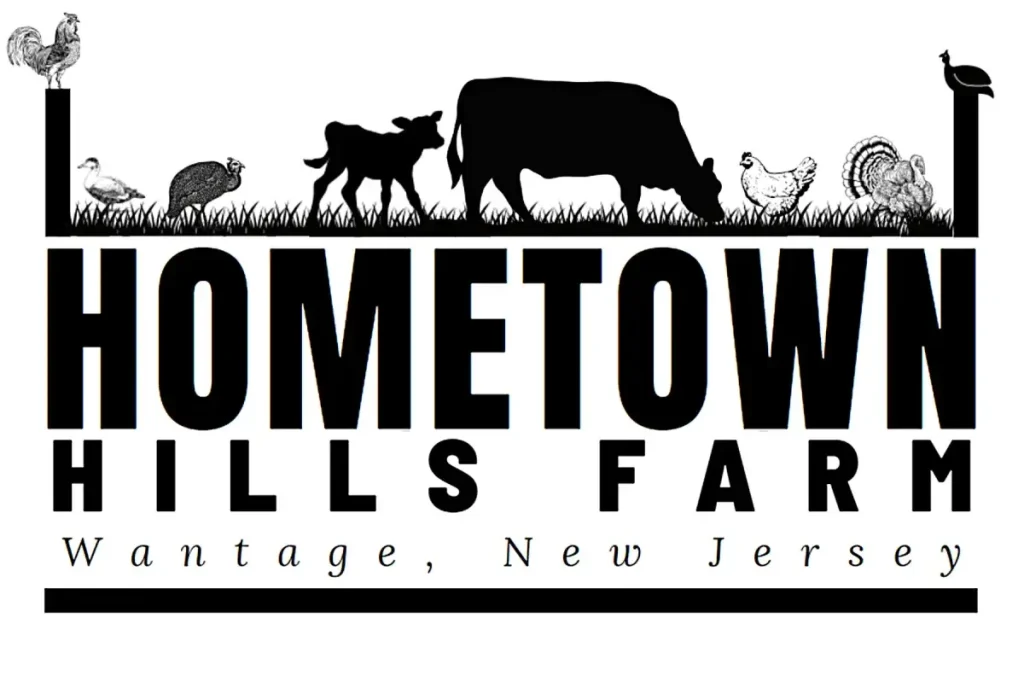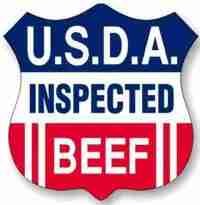Introduction to Grass-Fed Beef
Grass-fed beef refers to meat derived from cattle that have been raised primarily on a diet of grass and forage, as opposed to grain-based feeds. This distinction in feeding practices significantly impacts not only the nutritional profile of the beef but also its flavor and environmental implications. Grass-fed cattle are often allowed to roam freely in pastures, promoting a more natural lifestyle compared to their grain-fed counterparts, which are typically confined and fed a diet heavily supplemented with grains and other feed additives.
The dietary practices of grass-fed cattle are instrumental in achieving certain nutritional benefits. These animals graze on a variety of grasses and legumes, which enhances the nutritional quality of the meat they produce. Grass-fed beef is often touted for its higher concentrations of beneficial nutrients, such as omega-3 fatty acids and conjugated linoleic acid (CLA), compared to grain-fed beef. Moreover, grass-fed beef is noted for containing a better balance of fatty acids, which can contribute to overall health.
The growing popularity of grass-fed beef among health-conscious consumers stems from a broader awareness of dietary choices and their impact on health. With an increasing emphasis on sustainable and ethical farming practices, many people are choosing grass-fed options for both health and ecological reasons. The demand for grass-fed products reflects a shift towards more transparent sourcing of food, with consumers actively seeking out products that align with their values concerning health and environmental stewardship.
Essential Nutrients Found in Grass-Fed Beef
Grass-fed beef offers a wide array of essential nutrients that contribute significantly to overall health and wellness, making it a valuable addition to a balanced diet. Beyond its high protein content, which is well-known, grass-fed beef is rich in vitamins and minerals that support various bodily functions.
One of the key vitamins found in grass-fed beef is Vitamin A, specifically in the form of retinol. This fat-soluble vitamin is essential for maintaining good vision, immune function, and skin health. Another important nutrient is Vitamin E, an antioxidant that helps protect cells from oxidative stress, playing a crucial role in maintaining a healthy cardiovascular system.
Grass-fed beef is also an excellent source of various B vitamins, including B12, B6, niacin, and riboflavin. Vitamin B12 is particularly vital for nerve function, red blood cell formation, and DNA synthesis. Deficiencies in B12 can lead to fatigue and neurological issues. B6, on the other hand, is crucial for protein metabolism and cognitive development. Riboflavin aids in energy production and may help improve metabolism, making these B vitamins integral to the body’s energy systems.
Moreover, grass-fed beef contains higher levels of omega-3 fatty acids compared to grain-fed beef. Omega-3s are essential fats that support heart health by reducing inflammation and improving blood lipid profiles. They also play a significant role in brain health, contributing to cognitive function. Additionally, the presence of minerals such as zinc and iron in grass-fed beef further enhances its nutritional profile, supporting immune function and oxygen transport within the body.
Emphasizing the nutritional diversity of grass-fed beef, it becomes evident that its benefits extend far beyond protein, making it a wholesome food choice for individuals seeking to enhance their overall health.
Omega-3 Fatty Acids: The Heart-Healthy Component
Grass-fed beef is often lauded for its superior nutritional profile when compared to grain-fed alternatives, one of the standout components being its higher levels of omega-3 fatty acids. These essential fats are crucial for maintaining overall health and are particularly recognized for their myriad benefits related to heart health. Omega-3 fatty acids play a significant role in reducing triglycerides, lowering blood pressure, and decreasing the risk of heart-related conditions, making them an important nutrient for cardiovascular support.
Healthcare professionals have linked omega-3 fatty acids to anti-inflammatory properties, which can contribute to overall cardiovascular well-being. Chronic inflammation is a significant factor in various diseases, including heart disease and diabetes. Grass-fed beef contains a more favorable omega-6 to omega-3 ratio than its grain-fed counterpart, which can help mitigate inflammation in the body. The presence of these beneficial fats aids in the reduction of inflammatory markers, thereby enhancing heart health.
Additionally, research indicates that omega-3 fatty acids could potentially lower the risk of developing chronic diseases. Regular consumption of high-omega-3 foods contributes to better cognitive function and mood regulation, factors that directly impact one’s quality of life. The nutrients found in grass-fed beef, paired with its higher omega-3 content, present an advantageous option for those seeking to enhance their dietary intake of these essential fats. Furthermore, this nutrient-rich beef can be an excellent addition to a heart-healthy diet that emphasizes whole foods and balanced nutrition.
In summary, the increased levels of omega-3 fatty acids in grass-fed beef not only improve its nutritional value but also provide significant benefits for heart health and overall wellness. Emphasizing omega-3-rich diets can offer protective benefits against inflammation and chronic diseases, making grass-fed beef a wise choice for health-conscious individuals.
Conjugated Linoleic Acid (CLA) and Its Benefits
Conjugated Linoleic Acid (CLA) is a unique form of fatty acid found in grass-fed beef and dairy products, distinguished by its potential health benefits. Rather than simply serving as a source of calories, CLA possesses unique properties that suggest it may contribute positively to human health in various ways. Research indicates that CLA can play a significant role in weight management by promoting fat loss while preserving lean muscle mass. This is particularly beneficial for individuals looking to maintain a healthy body composition.
Several studies have explored the mechanism through which CLA exerts its effects on fat metabolism. It is thought to enhance the rate of fat oxidation and reduce fat storage in the body. This is a crucial aspect, especially for those struggling with obesity or related metabolic disorders. Furthermore, CLA has shown promise in improving insulin sensitivity, which can be beneficial for metabolic health and may help in preventing conditions like type 2 diabetes.
In addition to weight management, CLA has garnered attention for its potential role in cancer prevention. Some studies suggest that CLA may inhibit the growth of certain types of cancer cells, particularly breast and colorectal cancers. This is believed to occur through various mechanisms, including antioxidant activity and modulating inflammatory pathways, although further research is necessary to fully establish these connections and understand the underlying biological processes.
In conclusion, the presence of Conjugated Linoleic Acid in grass-fed beef provides a compelling reason to consider it as part of a balanced diet. By supporting weight management, enhancing metabolic health, and potentially offering protective benefits against cancer, CLA exemplifies how grass-fed beef can contribute positively to nutritional wellness. However, it remains important to consume it within a context of overall dietary balance and lifestyle choices.
Antioxidant Properties of Grass-Fed Beef
Grass-fed beef is increasingly recognized not just for its superior taste but also for its impressive nutritional profile, particularly regarding its antioxidant properties. Among the most notable antioxidants found in grass-fed beef are glutathione and superoxide dismutase (SOD). These compounds play a crucial role in protecting cells from oxidative stress, which is caused by free radicals in the body. Oxidative stress can lead to various chronic diseases and accelerate the aging process, making the presence of these antioxidants in grass-fed beef a significant health benefit.
Glutathione is a tripeptide composed of three amino acids: cysteine, glutamine, and glycine. It is known as the body’s master antioxidant, working tirelessly to neutralize free radicals and support immune function. By consuming grass-fed beef, individuals can potentially enhance their body’s glutathione levels, thereby promoting cellular health and longevity. This is particularly relevant in today’s environment, where daily exposure to pollution and stressors can deplete this vital antioxidant.
Superoxide dismutase, another essential antioxidant present in grass-fed beef, is a crucial enzyme that helps combat superoxide radicals, which are highly reactive molecules generated during metabolic processes. By catalyzing the conversion of these radicals into less harmful substances, SOD helps to mitigate oxidative damage to cells, further promoting overall health. Regular inclusion of grass-fed beef in one’s diet can support the body’s antioxidant defenses, contributing to a more robust defense against the effects of aging and chronic illness.
Overall, the antioxidant properties of grass-fed beef not only enhance its nutritional value but also underscore its potential role in promoting health and longevity. Consuming grass-fed beef as part of a balanced diet may provide an effective means of bolstering the body’s natural defenses against oxidative stress, thereby supporting long-term health outcomes.
Mineral Content in Grass-Fed Beef
Grass-fed beef is not only recognized for its superior protein content but also holds significant value due to its rich mineral profile. Some of the key minerals found in grass-fed beef include iron, zinc, and selenium, each of which plays a crucial role in maintaining optimal bodily functions.
Iron is an essential mineral that is vital for the production of hemoglobin, the protein in red blood cells that carries oxygen throughout the body. Consuming adequate iron is crucial for energy production and the prevention of anemia. Grass-fed beef contains heme iron, which is more easily absorbed by the body compared to non-heme iron found in plant sources. This makes grass-fed beef a valuable source of dietary iron, especially for individuals who may be at risk of iron deficiency.
Zinc is another important mineral present in grass-fed beef, significant for various biological processes. It is involved in immune system function, cellular growth, and DNA synthesis. Adequate zinc intake is essential for the body’s ability to heal wounds and fight off infections. Grass-fed beef provides a bioavailable source of zinc, making it beneficial for those seeking to support their immune health, especially in a diet that may lack other zinc-rich foods.
Selenium, though required in smaller amounts, is equally important due to its role as an antioxidant. This mineral helps to combat oxidative stress in the body and supports thyroid function. A diet rich in selenium can contribute to improved metabolic health and enhanced immune response. Grass-fed beef serves as a good source of this mineral, allowing individuals to incorporate it into their diets effectively.
In conclusion, the mineral content of grass-fed beef, including iron, zinc, and selenium, contributes significantly to various bodily functions, from immune support to energy production. Incorporating this nutrient-dense food into your diet may offer numerous health benefits, thus supporting overall well-being.
Sustainability and Ethical Considerations
The production of grass-fed beef has gained significant attention in recent years, particularly in relation to its sustainability and ethical implications. Grass-fed cattle are typically raised on pasture, which can lead to a more sustainable agricultural system when compared to conventional feedlot operations. This pasture-based approach often results in lower greenhouse gas emissions, as grass-fed cattle emit less methane per unit of beef produced. Furthermore, the management of grazing lands can promote soil health, enhance biodiversity, and improve carbon sequestration capabilities of the land, all of which contribute positively to the environment.
Another key aspect of sustainability involves the preservation of natural ecosystems. Grass-fed beef farming often includes rotational grazing practices, which allow for the recovery of pasturelands and the maintenance of surrounding wildlife habitats. By prioritizing pasture management, these farming systems can mitigate overgrazing and promote a more balanced coexistence of livestock and wildlife. Consequently, grass-fed beef production tends to align closer with regenerative agriculture principles, which focus on restoring soil health and increasing ecological resilience.
Additionally, ethical considerations related to animal welfare play a central role in the discussion of grass-fed beef. In contrast to conventional farming practices, where animals may be confined in overcrowded feedlots with limited space, grass-fed systems allow cattle to roam freely in pastures. This improved living condition not only enhances the quality of life for the animals but also addresses consumer concerns about animal cruelty. The ethical treatment of livestock resonates with consumers who prioritize humane farming practices, and thus, grass-fed beef appeals to a growing demographic seeking sustainable and ethical food choices.
In summary, the sustainability and ethical considerations surrounding grass-fed beef production highlight its potential advantages in promoting environmental health and animal welfare, establishing it as a viable alternative to conventional beef farming practices.
Potential Myths About Grass-Fed Beef
Grass-fed beef has gained considerable popularity among health-conscious consumers, yet several myths and misconceptions persist in public discussions. One of the most prevalent misunderstandings revolves around the assumption that grass-fed beef is prohibitively expensive. While it is true that grass-fed cattle farming often incurs higher costs due to longer growth periods and sustainable practices, numerous markets offer competitively priced options. Additionally, consumers may find that buying directly from local farmers or purchasing in bulk can significantly reduce costs. This suggests that while grass-fed beef may appear more expensive, savvy shopping can make it accessible to a wider audience.
Another common myth is that grass-fed beef has a distinctly inferior taste compared to its grain-fed counterpart. The flavor profile of grass-fed beef can indeed differ; it typically has a more robust, earthy taste attributed to the animal’s diet. Some consumers may prefer this flavor, while others might find it less appealing. It is essential to recognize that taste is subjective and can vary widely among individuals, depending on personal preferences and culinary preparation methods. Thus, the assertion that grass-fed beef uniformly tastes worse than grain-fed beef is misleading.
Finally, many health enthusiasts proclaim that grass-fed beef is nutritionally superior, particularly in nutrient density and omega-3 fatty acids. While research supports trends suggesting that grass-fed beef has higher levels of certain nutrients, such as omega-3s and antioxidants, it is important to clarify that the differences may not be significant enough to justify blanket statements. Overall, while grass-fed beef may offer certain advantages, nutritional content can vary widely based on many factors, including the specific practices of the farm, animal genetics, and even the cut of meat. Understanding these complexities can help consumers make informed decisions while disregarding oversimplified myths.
Incorporating Grass-Fed Beef into Your Diet
Integrating grass-fed beef into your meals can elevate the nutritional profile of your diet while enhancing the overall taste of your dishes. Here are some practical tips and recipe ideas to help you incorporate this nutrient-dense protein source seamlessly into your everyday meals.
When shopping for grass-fed beef, look for options that are labeled as 100% grass-fed and grass-finished. This ensures that the cattle have been raised on a natural diet, contributing to the unique flavor and health benefits associated with grass-fed beef. Ground grass-fed beef is a versatile ingredient that can be used in countless recipes. One popular dish is grass-fed beef tacos, where you can season the ground meat with spices and serve it in whole-grain tortillas with fresh toppings like avocado, salsa, and lettuce.
For a hearty meal, consider preparing a grass-fed beef stir-fry. Using thinly sliced strips of grass-fed steak, sauté it with a variety of colorful vegetables such as bell peppers, broccoli, and snap peas. The quick cooking time preserves the tenderness of the beef and maintains the vibrant colors and nutrients of the vegetables. Serve this stir-fry over brown rice or quinoa for a balanced dish.
Slow cooking is another excellent method for preparing grass-fed beef, as it allows the meat to become tender while infusing flavors. A grass-fed beef stew is a perfect example, featuring chunks of beef simmered with root vegetables and aromatic herbs. Not only does this dish warm you up, but it also delivers a rich source of protein along with valuable nutrients from the vegetables.
Finally, grass-fed beef burgers are a crowd favorite. You can create patties using grass-fed ground beef, seasoned as you prefer, and grill or cook them on a stovetop. Serve topped with fresh ingredients like lettuce, tomatoes, and your choice of sauces.
By experimenting with these dishes, you can not only enjoy the distinctive taste of grass-fed beef but also reap its numerous health benefits while enhancing your daily meal planning.
Share This Story, Choose Your Platform!
Grass-Fed Beef & Pastured Pork
Order Online
Discover the difference of premium, locally sourced meat with our grass-fed beef shares. Sourced directly from our sustainable Wantage, New Jersey farm in Sussex County, our cattle are humanely raised on lush pastures. Each cut is carefully selected and expertly processed to deliver unmatched freshness and flavor. Taste the exceptional quality of our grass-fed beef, raised right here in our community.


